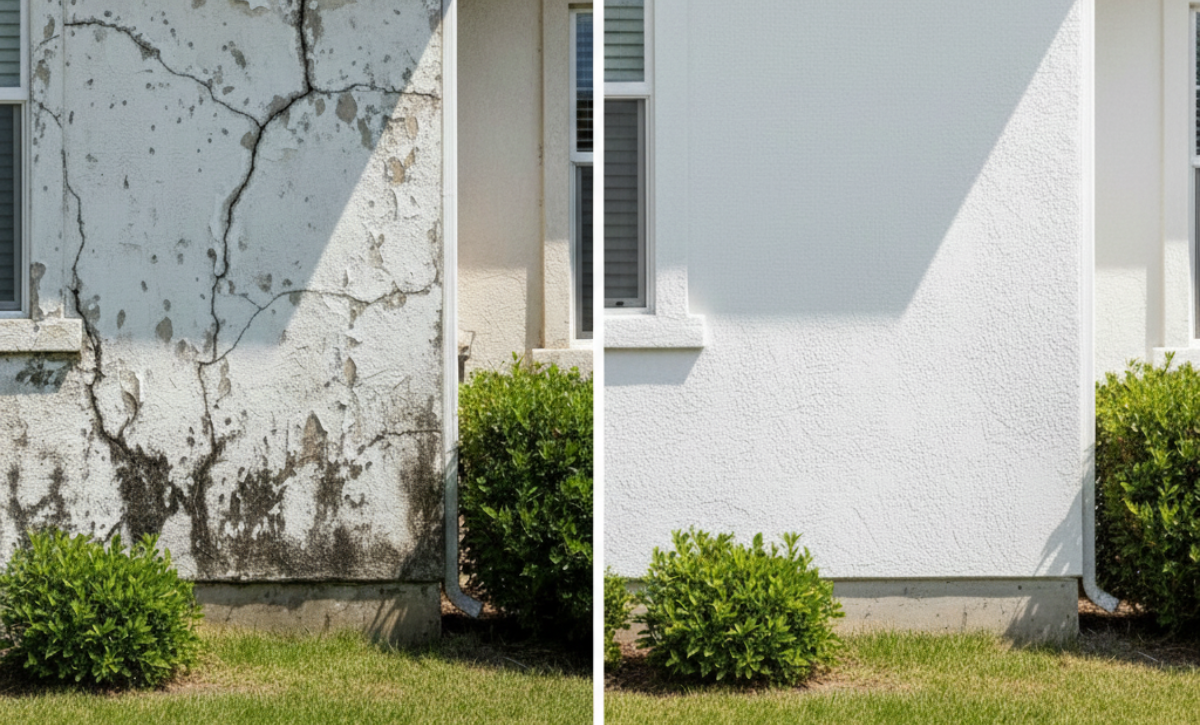Installing stucco over concrete masonry unit (CMU) block walls is a common practice in both residential and commercial construction, especially in regions like Southern California. While it offers a clean and durable finish, the process comes with specific technical hurdles that demand proper planning and skilled workmanship. In this post, we’ll walk you through the challenges of CMU stucco, the importance of surface preparation, and how to ensure lasting results. If you’re wondering what makes stucco installation over CMU block walls more complicated than other surfaces, you’re not alone. Many property owners expect stucco to simply be troweled on and smoothed out—but the truth is, the process is far more involved.
Understanding CMU Block Walls
Before diving into the challenges, it’s important to understand the material itself. CMU blocks are large rectangular bricks made of concrete. They’re strong, affordable, and widely used for structural walls. However, their surface is porous, rough, and prone to uneven absorption of moisture. This can complicate adhesion and result in cracks or peeling if stucco is applied improperly.
This is where the expertise of a professional stucco contractor in San Diego becomes essential. Having someone experienced with masonry surfaces is key to avoiding costly problems down the road.
Surface Preparation: The First Big Challenge
One of the primary challenges of CMU stucco is getting the surface ready for application. Because CMU blocks have a rough texture and variable porosity, stucco cannot simply be applied directly without preparation.
To begin with, the wall must be clean, free of dust, oil, or any other materials that could weaken the bond. In many cases, a bonding agent or dash coat (a rough layer of cement) is required to create the proper surface for adhesion.
When this step is skipped or poorly executed, even the best stucco mix won’t hold up. Proper surface prep sets the stage for the rest of the project.
Moisture Control: A Critical Factor
Another big issue in stucco installation over CMU block walls is controlling moisture. CMU blocks naturally absorb water, which can wreak havoc on a stucco finish over time.
If water seeps in behind the stucco, it can lead to bubbling, mold, or efflorescence (a white, chalky residue on the surface). To prevent this, contractors must apply moisture barriers or use techniques like back-ventilation. Flashing and proper drainage around windows and doors are also necessary to direct water away from the wall.
Experienced professionals know how to anticipate and address moisture issues before they become visible damage.
Achieving a Uniform Finish
Creating a smooth, attractive finish over a CMU wall isn’t always easy. The blocks may vary slightly in size or alignment, which can affect how the stucco lays across the surface. Even small imperfections in the blockwork can cause uneven stucco application.
Additionally, temperature and humidity can affect how the stucco cures, especially on a surface like CMU that holds and transfers heat differently than framed walls. Skilled hands are needed to apply the material in consistent layers, ensuring a flawless finish that lasts.
This is one reason why many homeowners turn to pros for exterior plastering rather than tackling it themselves. The margin for error is slim, and mistakes can be expensive.
Long-Term Durability and Maintenance
While stucco is known for being a low-maintenance material, improper installation over CMU can reduce its lifespan dramatically. If corners are cut during application, the result may look good initially, but fail after just a few years.
When properly applied, stucco installation over CMU block walls can last decades with little upkeep. But reaching that point requires knowledge of materials, attention to detail, and an understanding of how the wall and stucco interact over time.
Working with a seasoned team ensures the system is built for durability, taking into account the unique behavior of CMU block.
Is DIY Worth the Risk?
Given the challenges of CMU stucco, it’s not recommended as a DIY project unless you have experience in masonry and plastering. The materials are heavy, timing is critical, and mistakes can be hard to fix once the stucco has set.
Hiring a trained stucco contractor in San Diego gives you peace of mind. You’ll know the job was done right, from preparation to final finish.
Final Thoughts: Quality Matters
Stucco can transform plain CMU block walls into sleek, attractive surfaces—but only when the right techniques are used. The answer to a successful project lies in understanding the challenges, using quality materials, and hiring professionals who specialize in this type of work.
Whether you’re building a new structure or upgrading an existing wall, paying attention to the details will ensure your stucco finish holds up beautifully over time. Contact us today at (619) 230-5203.






